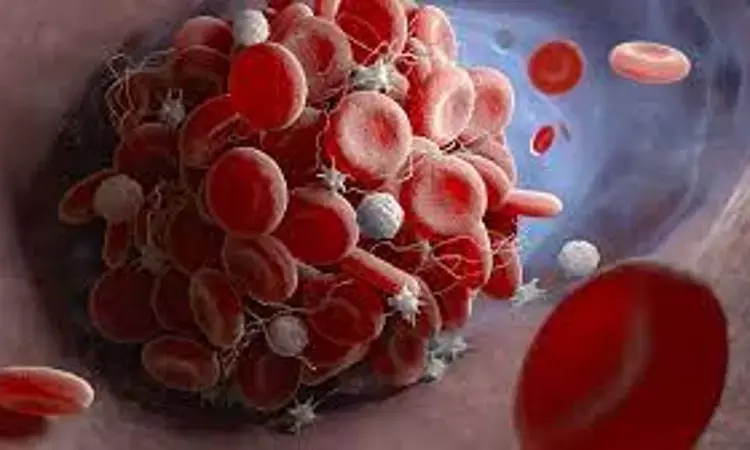- Home
- Medical news & Guidelines
- Anesthesiology
- Cardiology and CTVS
- Critical Care
- Dentistry
- Dermatology
- Diabetes and Endocrinology
- ENT
- Gastroenterology
- Medicine
- Nephrology
- Neurology
- Obstretics-Gynaecology
- Oncology
- Ophthalmology
- Orthopaedics
- Pediatrics-Neonatology
- Psychiatry
- Pulmonology
- Radiology
- Surgery
- Urology
- Laboratory Medicine
- Diet
- Nursing
- Paramedical
- Physiotherapy
- Health news
- Fact Check
- Bone Health Fact Check
- Brain Health Fact Check
- Cancer Related Fact Check
- Child Care Fact Check
- Dental and oral health fact check
- Diabetes and metabolic health fact check
- Diet and Nutrition Fact Check
- Eye and ENT Care Fact Check
- Fitness fact check
- Gut health fact check
- Heart health fact check
- Kidney health fact check
- Medical education fact check
- Men's health fact check
- Respiratory fact check
- Skin and hair care fact check
- Vaccine and Immunization fact check
- Women's health fact check
- AYUSH
- State News
- Andaman and Nicobar Islands
- Andhra Pradesh
- Arunachal Pradesh
- Assam
- Bihar
- Chandigarh
- Chattisgarh
- Dadra and Nagar Haveli
- Daman and Diu
- Delhi
- Goa
- Gujarat
- Haryana
- Himachal Pradesh
- Jammu & Kashmir
- Jharkhand
- Karnataka
- Kerala
- Ladakh
- Lakshadweep
- Madhya Pradesh
- Maharashtra
- Manipur
- Meghalaya
- Mizoram
- Nagaland
- Odisha
- Puducherry
- Punjab
- Rajasthan
- Sikkim
- Tamil Nadu
- Telangana
- Tripura
- Uttar Pradesh
- Uttrakhand
- West Bengal
- Medical Education
- Industry
The rate of VTE in hospitalized pediatric patients continues to increase in US: Study

Rate of VTE in hospitalized pediatric patients continues to increase from 2001 to 2007 and 2008 to 2019, according to a recent study published in the Pediatrics.
Deep Vein Thrombosis and Pulmonary Embolism (DVT/PE) are often underdiagnosed and serious, but preventable medical conditions. Deep vein thrombosis (DVT) is a medical condition that occurs when a blood clot forms in a deep vein. These clots usually develop in the lower leg, thigh, or pelvis, but they can also occur in the arm. It is important to know about DVT because it can happen to anybody and can cause serious illness, disability, and in some cases, death. The good news is that DVT is preventable and treatable if discovered early.
In 2009, a large multicenter study demonstrated that the rate of pediatric venous thromboembolism (VTE) across US children's hospitals had significantly increased from 2001 to 2007. The objective of this study was to evaluate the rate of pediatric VTE from 2008 to 2019 using similar methodology.
A retrospective cohort study using the Pediatric Health Information System (PHIS) database. Subjects from birth to <18 years admitted from 2008 through 2019 who had an ICD-9-CM or ICD-10-CM code for VTE were included. Demographics, underling medical comorbidities and mortality were collected. VTE location and anticoagulation data during admission were extracted.
The results of the study are:
During the 12-year study period, there were 52 401 hospital admissions among 39 713 pediatric patients with a diagnosis of VTE. The VTE admission rate increased from 46 VTE cases per 10 000 admissions in 2008 to 106 VTE cases per 10 000 admissions in 2019, a 130% increase (P < .0001) in VTE events. The median age at admission was 6.1 years, and almost one-third (31.3%) of patients with VTE were in the adolescent age group (13–17 years). Most patients (78%) had an underlying chronic medical condition.
Thus, the researchers concluded that the rate of VTE in hospitalized pediatric patients continues to increase from a 70% increase reported from 2001 to 2007 to the 130% increase from 2008 to 2019. These findings support the need for more effective VTE prevention strategies. Clinical trials focused on risk stratification and VTE prevention are needed.
Reference:
The Continued Rise of Venous Thromboembolism Across US Children's Hospitals by Sarah H O'Brien, et al. published in the Pediatrics.
https://publications.aap.org/pediatrics/article-abstract/doi/10.1542/peds.2021-054649/184770/The-Continued-Rise-of-Venous-Thromboembolism?redirectedFrom=fulltext
Dr. Shravani Dali has completed her BDS from Pravara institute of medical sciences, loni. Following which she extensively worked in the healthcare sector for 2+ years. She has been actively involved in writing blogs in field of health and wellness. Currently she is pursuing her Masters of public health-health administration from Tata institute of social sciences. She can be contacted at editorial@medicaldialogues.in.
Dr Kamal Kant Kohli-MBBS, DTCD- a chest specialist with more than 30 years of practice and a flair for writing clinical articles, Dr Kamal Kant Kohli joined Medical Dialogues as a Chief Editor of Medical News. Besides writing articles, as an editor, he proofreads and verifies all the medical content published on Medical Dialogues including those coming from journals, studies,medical conferences,guidelines etc. Email: drkohli@medicaldialogues.in. Contact no. 011-43720751


